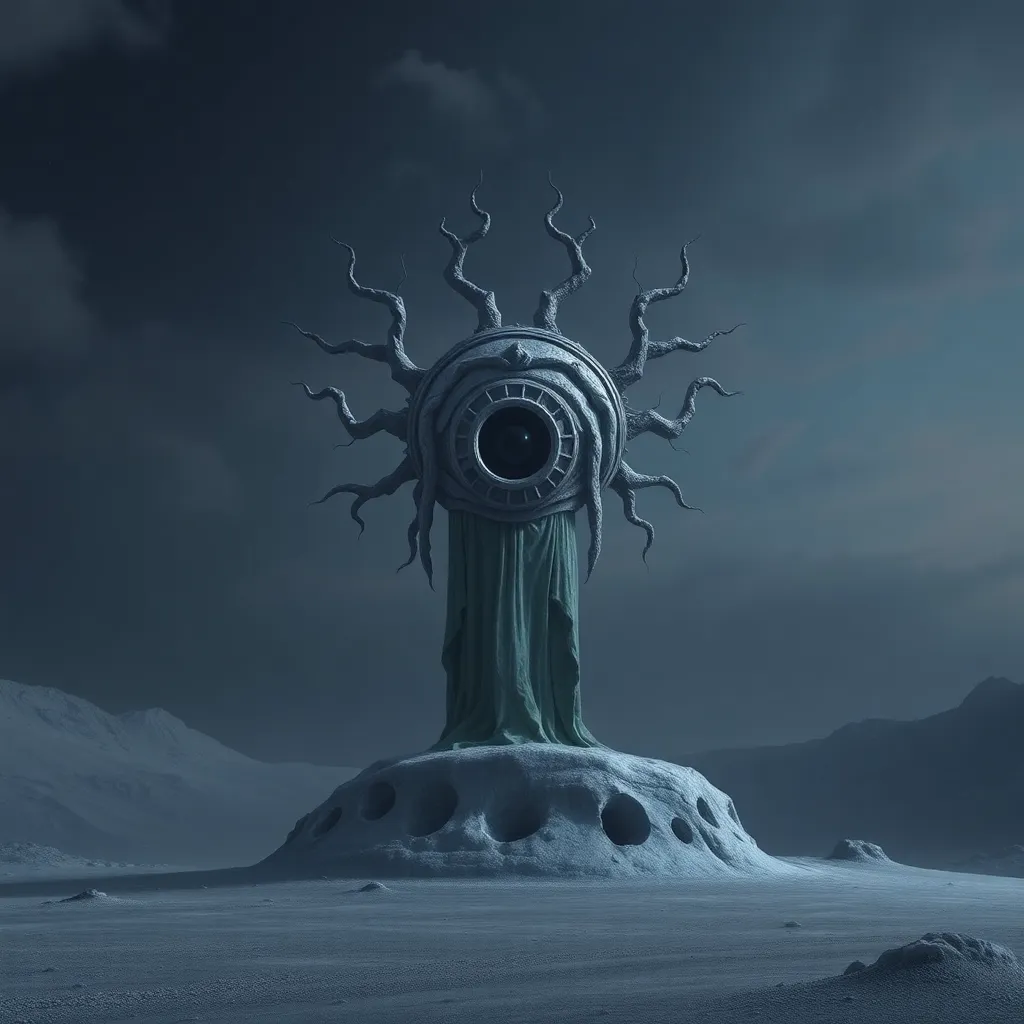The Cyclops as a Symbol of Isolation and Loneliness
I. Introduction
The Cyclops, a mythical one-eyed giant, holds a prominent place in Greek mythology, captivating audiences with tales of brute strength and cunning. Known primarily from Homer’s “Odyssey,” the Cyclops embodies themes that resonate deeply with human experiences, particularly isolation and loneliness. This article explores the multifaceted role of the Cyclops in mythology and literature, examining how this creature symbolizes the profound effects of solitude.
Through an exploration of historical context, psychological interpretations, and cultural significance, we aim to uncover the layers of meaning associated with the Cyclops and its relevance in contemporary discussions about loneliness.
II. Historical Context of the Cyclops in Mythology
The origins of the Cyclops can be traced back to ancient Greek literature, where they were depicted as formidable beings with immense strength and a single eye at the center of their foreheads. These creatures appear in various myths, but their most famous portrayal is in the tale of Odysseus and Polyphemus.
- Odysseus and Polyphemus: In this epic, Odysseus and his men become trapped in the cave of the Cyclops Polyphemus. Their encounter highlights the themes of cleverness versus brute strength, ultimately leading to Polyphemus’ downfall.
- Other Cyclopes: Cyclopes also appear in Hesiod’s “Theogony,” where they are described as the sons of Uranus and Gaia, responsible for forging Zeus’ thunderbolts.
The Cyclops’ cultural significance in ancient societies extended beyond mere folklore; they represented the fears and challenges of the human condition, particularly the struggles with isolation.
III. The Cyclops as an Archetype of Isolation
Physically, the Cyclops is often depicted as a solitary figure, emphasizing its isolation from others. The creature’s distinct single eye sets it apart, symbolizing a lack of connection with the world around it.
- Physical Characteristics: The giant size and solitary eye of the Cyclops can be seen as metaphors for loneliness, suggesting a being that is both powerful and profoundly alone.
- Living Conditions: Cyclopes often live in remote caves, away from society, reinforcing their status as outsiders. This physical separation mirrors the emotional and psychological distance felt by those experiencing loneliness.
When compared to other mythological creatures, such as the Minotaur or the Sirens, the Cyclops stands out as a figure whose isolation is not only physical but also emotional.
IV. Psychological Interpretation of the Cyclops
The Cyclops serves as a powerful metaphor for the human experience of loneliness. In psychology, isolation can lead to a range of mental health issues, including depression and anxiety.
- Metaphor for Loneliness: The Cyclops, in its singularity, reflects how isolation can distort one’s perception of reality, much like how individuals may feel disconnected from others.
- Mental Health Impact: Studies indicate that prolonged isolation can have detrimental effects on mental well-being, leading to feelings of despair and hopelessness.
Literary and psychological insights reveal that the experience of solitude can lead to profound personal growth, but it can also foster a sense of despair akin to that experienced by the Cyclops.
V. Symbolism of the Cyclops in Literature and Art
Throughout history, the Cyclops has been represented in various art forms, from ancient pottery to modern films. Each depiction offers insight into societal fears and anxieties surrounding isolation.
- Art Representations: Cyclopes are often portrayed in art as menacing figures, their physicality accentuating their perceived threat and loneliness.
- Modern Interpretations: In contemporary literature and film, the Cyclops is reimagined in various ways, often as a misunderstood creature, reflecting a deeper understanding of loneliness in modern society.
These representations showcase how the Cyclops continues to resonate with audiences, reflecting collective fears about isolation and the human condition.
VI. The Role of the Cyclops in Contemporary Culture
In modern media, the Cyclops appears in various forms, from animated films to horror stories, often embodying themes of loneliness and isolation.
- Modern Media: Films like “The Odyssey” adaptations and animated features portray the Cyclops in diverse ways, sometimes as a villain, sometimes as a sympathetic figure.
- Influence of Contemporary Views: Today, societal views on isolation have evolved, leading to more nuanced portrayals of the Cyclops as a reflection of personal struggles with loneliness.
The Cyclops remains relevant in today’s discourse, serving as a reminder of the pervasive nature of loneliness in contemporary life.
VII. Lessons from the Cyclops: Overcoming Isolation
The stories of the Cyclops offer valuable lessons on overcoming isolation and fostering connection. Themes of empathy and understanding are crucial in combating loneliness.
- Connection and Community: Just as Odysseus ultimately escapes Polyphemus through teamwork and cleverness, individuals today can find solace in community and connection.
- Empathy in Action: Understanding the experiences of those who feel isolated can foster greater empathy, helping to bridge the gaps created by loneliness.
The tale of the Cyclops serves as a source of inspiration for personal growth, encouraging individuals to seek connection and resilience in the face of loneliness.
VIII. Conclusion
In conclusion, the Cyclops stands as a powerful symbol of isolation and loneliness, resonating through history and into contemporary society. Its depiction in mythology and art reflects the enduring significance of these themes in human life.
As we reflect on the lessons from the Cyclops, it becomes clear that addressing loneliness is vital for personal and societal well-being. By fostering connection and understanding, we can navigate the complexities of isolation and emerge stronger.




